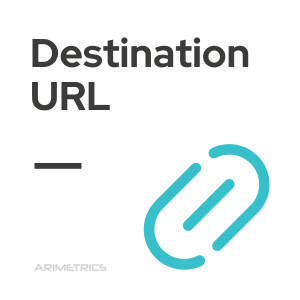Definition:
A destination URL is a web address that is the final destination of a link. It is the Page to which a user will be taken when they click on a link from another web page, document or application. It can be a direct link to a specific web page, such as an individual product or service, or it can be a page that displays various elements, such as the results of a search. The process of linking to another web address is known as a hyperlink.
What is a Destination URL for?
Without a clear understanding of what it is and how it works, we could be missing out on the potential benefits that come with using one.
A destination URL is used to establish hyperlinks from one web page to another. It is an important tool for browsing the internet as it allows users to quickly access other websites without having to manually type in the address each time. Users can easily link between pages and get exactly where they need to be faster than ever.
What is a destination URL in Google Ads
A destination URL in Google Ads is the web address that a user will be taken to after clicking on an ad. When creating an ad, you must specify the destination URL to which users will be sent. It must lead to a page related to the ad content and must be properly optimized for mobile devices. For example, if your ad promotes an e-commerce site, it should be the home page of the website where customers can shop. Using one with the right format will help ensure that your ads are effective and drive more traffic to your website or landing page.
Understanding what a destination URL is and how it works in Google Ads can help optimize for best results and attract more visitors to a website or landing page.
Destination URL Examples
Examples may vary depending on the type of link used. For example, a link to an individual product page would have a different destination URL than a search page that displays multiple items. Here are some common examples:
- Home page: A homepage is usually the first page that users have when they visit a website. It is usually the main page that contains links to other pages of the site and serves as a kind of introduction. The destination URL of a homepage would be the full web address of the homepage itself.
- Product Page: A product page is where users can learn about specific products or purchase them directly. The destination URL of a product page would be the web address of the individual page for that particular item.
- Search page: A search page displays the results of a user’s query and typically contains multiple links to other pages. The destination URL of a search page would be the full web address of the search results themselves.
A destination URL is an important tool for navigating the Internet and linking web pages. It is used in Google ads to specify the web address to which users will be redirected after clicking on an ad. Understanding how to use and optimize it correctly will help you get the most out of your Google Ads campaigns and drive more traffic to a website or landing page. Ultimately, this can translate into increased sales, brand awareness and customer loyalty.
